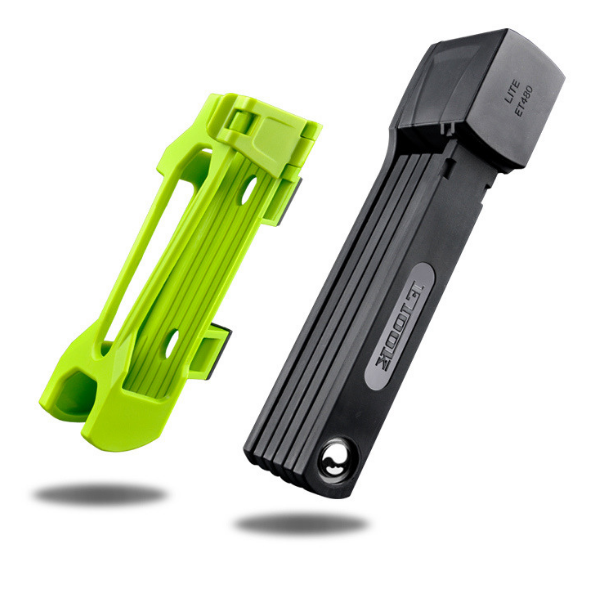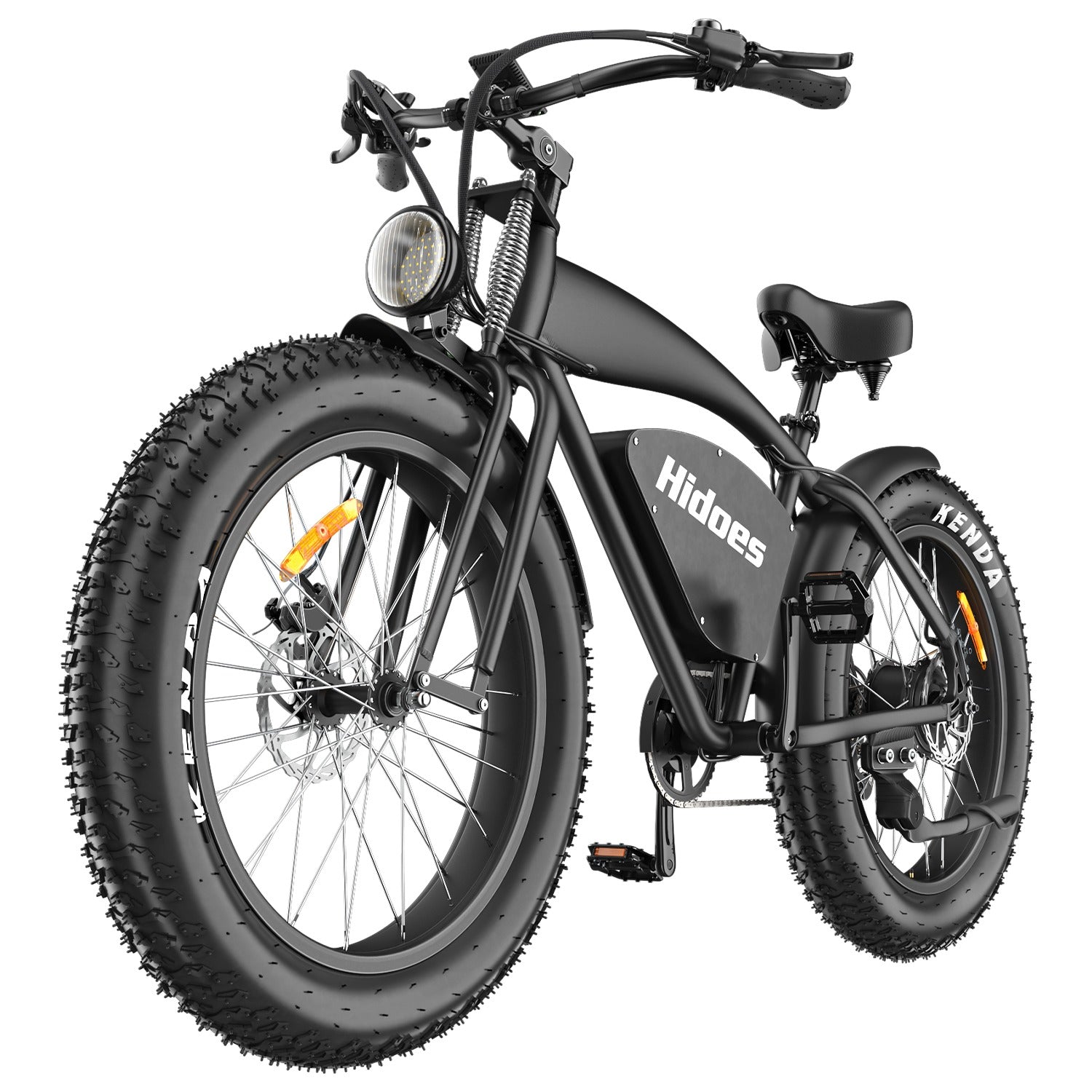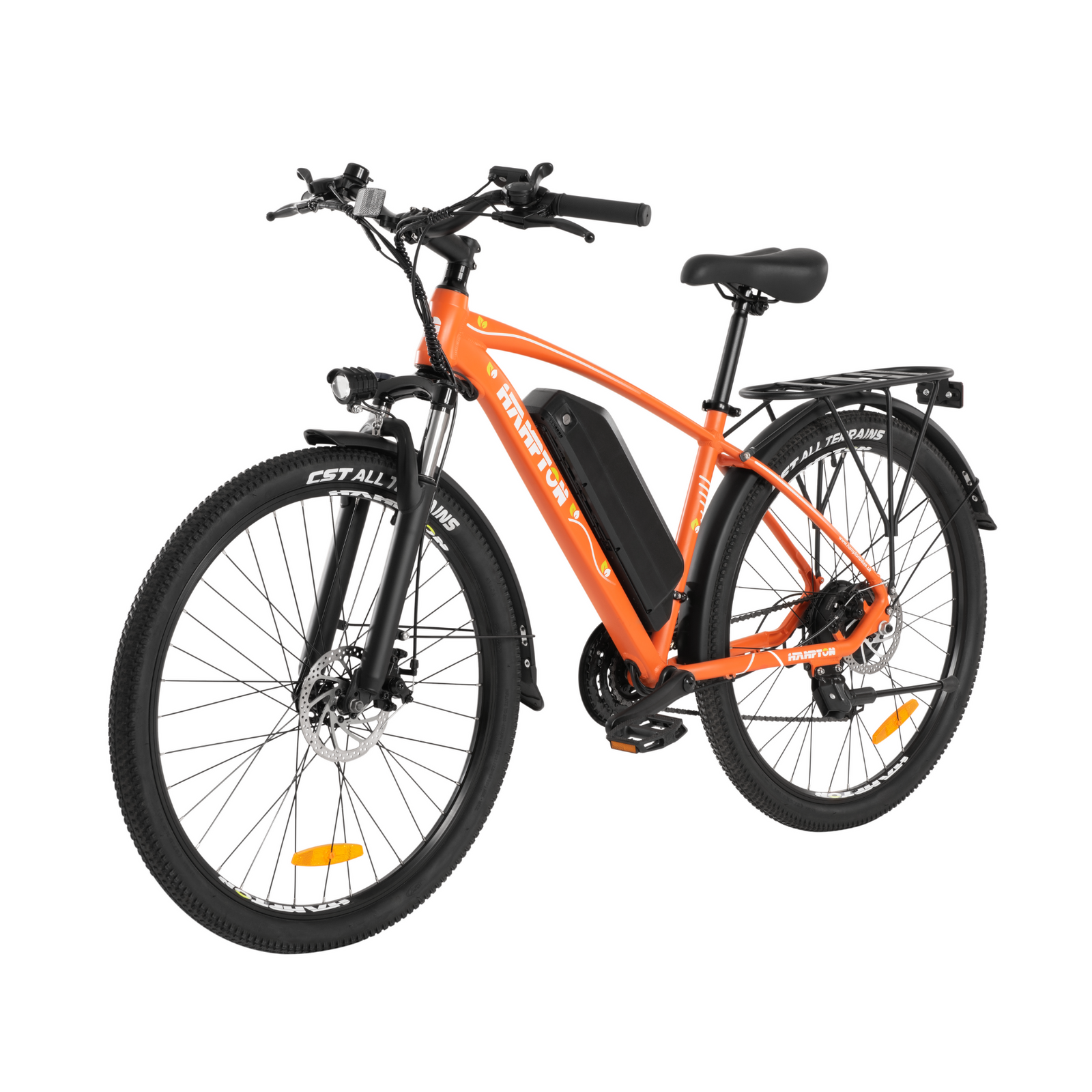In recent years, electric bikes (e-bikes) have gained tremendous popularity as an eco-friendly and efficient mode of transportation. Whether you're a seasoned cyclist or a casual rider, the electric bike revolution has something to offer everyone. However, with a multitude of options available in the market, choosing the right e-bike can be a daunting task. Fear not, as this comprehensive Electric Bike Buyer's Guide is here to help you navigate through the sea of choices and find the perfect e-bike that suits your needs and preferences
Before diving into the specifics of purchasing an electric bike, it's essential to understand what sets them apart from traditional bicycles. This chapter will cover the basics of how electric bikes work, the various types available (city bikes, mountain bikes, folding bikes, etc.), and the benefits of choosing an e-bike over a conventional bicycle.
Understanding Electric Bikes
Electric bikes, commonly known as e-bikes, represent a revolutionary shift in the world of cycling. They combine the health benefits of traditional biking with the convenience and power of electric technology. Understanding the fundamentals of electric bikes is essential before delving into the buying process.
How Do Electric Bikes Work?
At the heart of every electric bike is an electric motor powered by a rechargeable battery. These motors assist the rider's pedaling efforts, providing an extra boost when needed. The level of assistance can usually be adjusted, allowing riders to control the amount of power the motor contributes. Some e-bikes also come with a throttle, enabling users to ride without pedaling, though this feature may be regulated depending on local laws.
Types of Electric Bikes
- City Bikes
Designed for urban commuting, city e-bikes are characterized by a comfortable riding position, fenders, and built-in lights. They are perfect for short to medium-distance commutes.
- Mountain Bikes
Mountain e-bikes are equipped with robust frames and enhanced suspension systems, making them ideal for off-road adventures. They provide an extra boost for climbing steep trails and navigating challenging terrains.
- Folding Bikes
Perfect for commuters with limited storage space, folding e-bikes are compact and easily foldable. They are convenient for combining cycling with other forms of transportation.
- Cargo Bikes
Cargo e-bikes are designed for transporting goods or passengers. They often feature a sturdy frame and a cargo area in the front or rear, making them suitable for various practical purposes.
Benefits of Electric Bikes
- Health and Fitness
Contrary to misconceptions, electric bikes can contribute to improved health and fitness. Riders can choose the level of assistance, allowing them to pedal as much or as little as desired. This flexibility encourages physical activity without the fear of exhaustion.
- Environmental Sustainability
E-bikes are an eco-friendly alternative to traditional vehicles, emitting fewer greenhouse gases. They can significantly contribute to reducing traffic congestion and air pollution, making them a sustainable choice for urban transportation.
- Accessibility
Electric bikes make cycling more accessible to a broader demographic. They empower individuals with varying fitness levels and physical abilities to enjoy the benefits of cycling, promoting a more inclusive and diverse cycling community.
Conclusion
Understanding the basics of electric bikes lays the foundation for making an informed purchasing decision. As we delve deeper into this Electric Bike Buyer's Guide, we'll explore the intricacies of motor and power systems, frame designs, components, and other crucial factors that will help you find the perfect e-bike for your needs. So, saddle up, and let's explore the world of electric biking together.
Motor and Power Systems
One of the key components of an electric bike is its motor and power system. This chapter will explore the different types of motors, such as hub motors and mid-drive motors, and their respective advantages. It will also delve into battery technology, range considerations, and the importance of choosing the right power system based on your riding preferences and terrain.
The motor and power system of an electric bike are the driving forces behind its performance. Choosing the right combination is crucial to ensure a seamless and enjoyable riding experience. In this chapter, we'll delve into the different types of motors, power systems, and battery technologies that power electric bikes.
Types of Motors
- Hub Motors
Hub motors are located in the wheel hub, either in the front or rear wheel. They are known for their simplicity, low maintenance, and ease of use. Hub motors are particularly suitable for city commuting and leisurely rides. However, they may lack the torque needed for challenging terrains.
- Mid-Drive Motors
Mid-drive motors are situated near the bike's bottom bracket, directly powering the bike's chain. This design provides a more natural and balanced feel when pedaling. Mid-drive motors are often preferred for off-road and mountain biking, as they offer better torque and efficiency on steep inclines.
Power Systems
- Pedal Assist (Pedelec)
Pedal assist, or pedelec, is the most common power system in electric bikes. It provides assistance to the rider's pedalling efforts, with the level of assistance adjustable through different modes. This system is intuitive, as the motor activates when the rider pedals, offering a seamless and natural riding experience.
- Throttle Control
Throttle control allows the rider to control the motor's power output without pedalling. While convenient for a quick boost or when climbing steep hills, some regions may regulate or restrict throttle-controlled e-bikes. It's crucial to be aware of local regulations regarding throttle use.
Battery Technology- Lithium-Ion Batteries
Most modern electric bikes use lithium-ion batteries due to their high energy density, longer lifespan, and lightweight construction. Battery capacity is measured in watt-hours (Wh), with higher values indicating longer range. Consider the battery capacity in relation to your typical riding distance and terrain.
- Range Considerations
The range of an electric bike is influenced by factors such as battery capacity, motor efficiency, rider weight, terrain, and assist level. Understanding your riding habits and the typical distances you'll cover will help you choose a bike with an adequate range.
- Maintenance and Reliability
Consider the maintenance requirements of the motor and power system. Hub motors generally require less maintenance, making them a convenient choice for riders who prefer a low-maintenance option. Mid-drive motors may need more attention due to their involvement with the bike's drivetrain.
Conclusion
Choosing the right motor and power system is a critical step in finding the perfect electric bike. Whether you prioritize a smooth city commute, off-road adventures, or a mix of both, understanding the nuances of these systems will help you make an informed decision. In the next chapter, we'll explore the significance of the bike's frame and design, ensuring that your e-bike not only performs well but also suits your style and preferences.
Frame and Design
The frame of an electric bike plays a crucial role in determining its performance, comfort, and overall aesthetics. This chapter will guide you through the various frame materials, shapes, and designs available in the market. Whether you're looking for a sleek city commuter or a robust mountain bike, understanding frame characteristics will help you make an informed decision.
The frame is the backbone of any bicycle, and when it comes to electric bikes, its design plays a crucial role in determining performance, comfort, and overall aesthetics. In this chapter, we will explore the various aspects of e-bike frames, including materials, shapes, and designs, to help you find the perfect match for your riding style and preferences.
Frame Materials
- Aluminium
Aluminium is a popular choice for e-bike frames due to its lightweight nature and resistance to rust. It offers a good balance between strength and affordability, making it suitable for a wide range of applications, from city commuting to mountain biking.
- Carbon Fibre
Carbon fibre frames are known for their exceptional strength-to-weight ratio, providing a lightweight and stiff structure. While common in high-end road bikes, carbon fibre e-bike frames are becoming more prevalent, offering a smooth and responsive ride.
- Steel
Steel frames are durable and absorb vibrations well, providing a comfortable ride. However, they tend to be heavier than aluminium or carbon fibre frames. Steel e-bikes are often favoured for their classic aesthetic and robust build.
Frame Shapes and Geometry
- Step-Through Frames
Step-through frames, also known as low-step or open frames, have a low top tube, allowing riders to easily mount and dismount. This design is popular for city bikes and is especially convenient for riders who may have difficulty swinging their leg over a high top tube.
- Step-Over Frames
Step-over frames, also known as high-step frames, have a traditional diamond shape with a higher top tube. These frames are common in mountain bikes and provide a more aggressive riding position, enhancing stability and control on challenging terrains.
- Mixte Frames
Mixte frames combine elements of step-through and step-over designs, featuring a lower top tube that extends to the rear stays. This design offers a mix of the practicality of a step-through frame and the added strength of a step-over frame.
Design Features- Integrated Batteries
Some e-bikes come with integrated batteries, where the battery is seamlessly incorporated into the frame. This design not only enhances the aesthetics but also provides a more balanced weight distribution.
- Suspension Systems
For off-road or rough terrain riding, consider an e-bike with a suspension system. Front suspension (fork) or full suspension (front and rear) absorbs shocks and vibrations, providing a smoother and more comfortable ride.
- Sizing and Fit
Choosing the right frame size is essential for comfort and efficiency. Most manufacturers provide sizing charts based on rider height. Test riding different sizes can also help you determine the most comfortable fit.
Conclusion
The frame is the foundation of your electric bike, influencing its weight, comfort, and handling characteristics. By understanding the different materials, shapes, and design features, you can choose an e-bike that not only meets your functional needs but also aligns with your personal style and preferences. In the next chapter, we'll explore the components and features that contribute to the overall functionality of an electric bike, ensuring a smooth and enjoyable riding experience.
Components and Features
From brakes and gears to tires and suspension, the components and features of an electric bike contribute significantly to its overall functionality. This chapter will provide an in-depth analysis of the essential components, their impact on performance, and the importance of choosing the right features for your intended use.
The components and features of an electric bike play a significant role in its overall functionality and performance. From brakes and gears to tires and suspension, understanding these elements is crucial for making an informed decision when choosing the perfect e-bike. In this chapter, we'll explore the key components and features to consider.
Brakes
- Disc Brakes
Disc brakes, whether hydraulic or mechanical, are common on electric bikes. They offer reliable stopping power, especially crucial when riding at higher speeds or on challenging terrain. Hydraulic disc brakes generally provide better modulation and require less maintenance.
- Rim Brakes
While less common on e-bikes, rim brakes are still found on some models. They are lightweight and sufficient for city commuting but may lack the stopping power needed for more demanding rides.
Gears- Internal Hub Gears
Internal hub gears are enclosed within the rear hub, providing a clean and low-maintenance gear-shifting experience. They are ideal for city commuting but may have fewer gears than external derailleur systems.
- External Derailleur Gears
External derailleur gears are more common on electric mountain bikes, offering a wide range of gears for tackling diverse terrains. They are efficient and lightweight but may require more maintenance.
Tyres
- Tyre Size and Width
Tyre size and width significantly impact ride comfort and performance. Wider tyres provide more stability and comfort, while narrower tires are often preferred for efficiency and speed. Consider the terrain you'll be riding on when choosing tire width.
- Tubeless Tyres
Tubeless tyres have become increasingly popular, offering benefits such as reduced punctures, lower rolling resistance, and the ability to run lower tire pressures for enhanced comfort.
Suspension
- Front Suspension
Front suspension, in the form of a fork, absorbs shocks and vibrations from the front wheel. It enhances comfort and control, making it essential for off-road or uneven terrain riding.
- Full Suspension
Full suspension e-bikes feature both front and rear suspension systems. This design provides the highest level of comfort and control, making it ideal for challenging mountain biking trails.
Lights and Accessories
- Integrated Lights
Some e-bikes come with integrated lights, enhancing visibility and safety during low-light conditions. Consider whether the lights are powered by the main battery or require separate batteries.
- Rack and Fender Mounts
Rack and fender mounts are practical features for commuters or those planning to carry cargo. Ensure that your e-bike has the necessary mounts for attaching racks, fenders, or other accessories.
Conclusion
The components and features of an electric bike contribute to its overall performance and versatility. When selecting an e-bike, carefully consider your riding preferences and the specific features that will enhance your cycling experience. In the next chapter, we'll explore the practical aspects of test riding and sizing, ensuring that the chosen e-bike not only suits your preferences but also provides a comfortable and enjoyable ride.
Test Riding and Sizing
Choosing the right electric bike involves more than just understanding its technical specifications. Test riding and ensuring the correct size are crucial steps in finding an e-bike that provides the comfort, control, and overall riding experience you desire. In this chapter, we'll explore the importance of test rides, how to assess an e-bike's fit, and factors to consider during the sizing process.
The Importance of Test Riding
- Comfort and Fit
Test riding allows you to assess how comfortable the e-bike is and whether it fits your body proportions. A comfortable riding position contributes to an enjoyable experience and encourages longer rides.
- Handling and Control
Experience how the e-bike handles different terrains, including hills, turns, and bumps. Pay attention to how easily you can control the bike, especially at varying speeds.
- Noise and Vibration
Test rides provide an opportunity to assess any unwanted noise or excessive vibration from the motor or other components. A smooth and quiet ride enhances the overall enjoyment of cycling.
Sizing Considerations
- Rider Height
Matching the e-bike size to your height is crucial for comfort and proper body positioning. Most manufacturers provide sizing charts based on rider height, but individual preferences may vary.
- Stand-over Height
The stand-over height is the distance between the top tube and the ground when you straddle the bike. It should allow for sufficient clearance to ensure comfort and safety when stopping.
- Reach and Stack
Consider the reach (distance from the saddle to the handlebars) and stack (height of the front end) to assess your riding position. A comfortable reach and stack contribute to a more ergonomic and enjoyable ride.
Test Ride Checklist
- Frame Size
Ensure the e-bike's frame size aligns with your height, allowing for a comfortable and efficient riding position.
- Riding Position
Assess the riding position to determine if it suits your preferences, whether you prefer an upright position for commuting or a more aggressive stance for off-road adventures.
- Braking and Shifting
Test the brakes and gears to ensure they respond smoothly and effectively. Pay attention to any noise or lag in the shifting process.
- Motor Performance
Evaluate the motor's performance in different assist modes and terrain. Assess how seamlessly the motor integrates with your pedalling efforts.
Additional Considerations
- Test Multiple Models
If possible, test ride multiple e-bike models to compare their features, ride characteristics, and overall feel. This can help you make a more informed decision based on your preferences.
- Ask Questions
Don't hesitate to ask questions during the test ride. Inquire about the bike's specifications, maintenance requirements, and warranty to ensure you have a comprehensive understanding.
Conclusion
Test riding an electric bike is an indispensable step in the purchasing process. It provides first-hand experience with the bike's feel, performance, and comfort, helping you make an informed decision. Additionally, paying attention to sizing considerations ensures that your chosen e-bike not only meets your preferences but also provides a comfortable and ergonomic fit.
Armed with the knowledge gained from this Electric Bike Buyer's Guide, you're now ready to embark on your journey to find the perfect e-bike. Remember to consider your riding preferences, terrain, and budget while exploring the myriad options available in the market. Whether you're looking for a sustainable commute, an off-road adventure, or a leisurely ride through the city, the right electric bike is out there waiting for you. Happy cycling!














